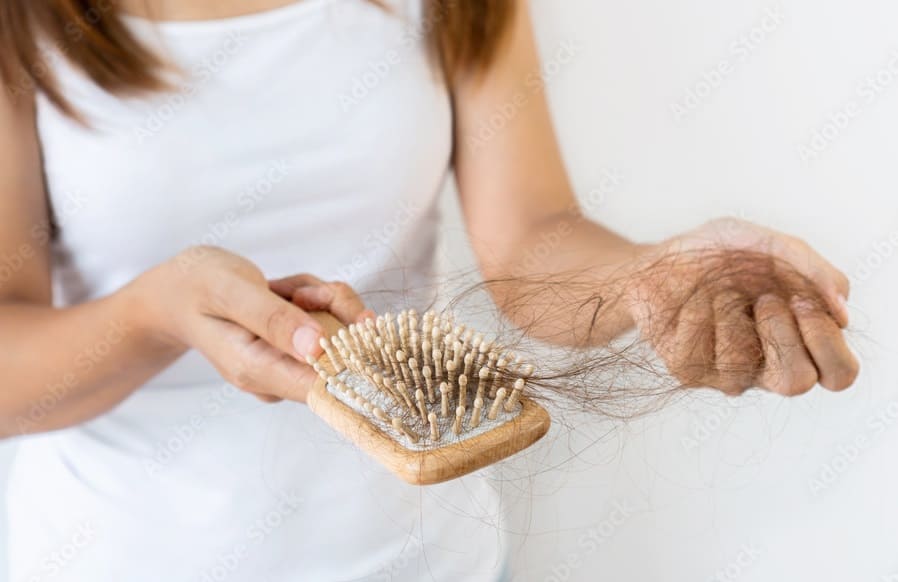When it comes to managing diabetes, most people focus on the big picture—blood sugar levels, insulin shots, medications, and lifestyle changes. But there’s another lesser-known yet frustrating symptom that many overlook: hair fall.
Yes, you read that right. If you’re living with diabetes and noticing more hair in your brush than usual, you’re not imagining things. Experts confirm that diabetes can lead to hair thinning or even bald patches in some cases. But how exactly does this happen? And what can you do about it?
Let’s break it down with insights from endocrinologists, dermatologists, and a closer look at how this chronic condition affects your hair.
The Link Between Diabetes and Hair Fall: What Experts Say
According to Dr. Priya Malhotra, a diabetologist based in Mumbai, “Hair loss is often one of the overlooked symptoms of diabetes. It doesn’t happen to everyone, but for those it affects, it can take a real toll on self-confidence and emotional well-being.”
Here’s how diabetes can trigger hair loss:
1. Disruption of the Hair Growth Cycle
Your hair naturally goes through three phases:
- Anagen (growth)
- Catagen (transition)
- Telogen (rest/shedding)
In people with diabetes, the body may spend more time in the telogen phase, causing more hair strands to fall out than usual. This can lead to diffuse hair thinning over time.
2. Poor Circulation to the Scalp
High blood sugar levels damage small blood vessels, which can limit the supply of oxygen and nutrients to the scalp and hair follicles. Just like any other organ or tissue, your hair needs nourishment to grow and stay strong. Without adequate blood flow, the follicles weaken—and so does your hair.
3. Hormonal Fluctuations
Type 2 diabetes is often linked to insulin resistance, which can trigger imbalances in hormones like androgens. These male hormones (present in both men and women) can cause androgenetic alopecia, commonly known as male or female pattern baldness.
In women, excess androgens can also lead to facial hair growth and thinning on the scalp, a pattern commonly seen in conditions like PCOS (which also shares links with insulin resistance).
4. Stress and Emotional Toll
Let’s face it—living with diabetes is stressful. The condition demands constant attention, dietary restrictions, and often causes emotional burnout. Stress can push your hair into the telogen phase prematurely, a condition known as telogen effluvium, where clumps of hair fall out after a stressful event or illness.
5. Autoimmune-Linked Hair Loss (Type 1 Diabetes)
If you have Type 1 diabetes, which is an autoimmune condition, you’re at higher risk for other autoimmune disorders—including alopecia areata. In this condition, your immune system mistakenly attacks your hair follicles, leading to patchy bald spots.
What Kind of Hair Loss Should You Look Out For?
Here are some common patterns of hair loss in diabetics:
- Thinning on the scalp (usually diffuse)
- Patchy bald spots (especially in autoimmune cases)
- Delayed regrowth after normal shedding
- Loss of body and facial hair (arms, legs, even eyebrows)
What You Can Do: Prevention and Treatment Tips from Experts
The good news? With the right care and attention, diabetes-related hair fall can be managed or even reversed. Here’s what experts recommend:
1. Manage Your Blood Sugar Like a Pro
This is your top priority. Consistently high glucose levels are the root cause of many diabetes-related complications, including hair loss. Follow your treatment plan, eat balanced meals, stay active, and check your sugar levels regularly.
“Keeping your HbA1c below 7% is ideal to reduce long-term complications,” says Dr. Malhotra.
2. Reduce Stress—Seriously!
Whether it’s deep breathing, meditation, walking, or journaling—find something that calms you. Chronic stress isn’t just bad for your mind; it disrupts your entire hormonal system, including your hair cycle.
3. Use Dermatologist-Approved Hair Products
Switch to gentle, sulfate-free shampoos. Avoid excessive heat styling, coloring, or chemical treatments that may stress your already weakened follicles.
Look for ingredients like:
- Biotin (Vitamin B7)
- Niacin (Vitamin B3)
- Caffeine (promotes scalp stimulation)
- Ketoconazole (anti-fungal, helps reduce inflammation)
4. Eat a Hair-Healthy Diet
Your hair loves:
- Protein (eggs, legumes, fish)
- Iron (leafy greens, lean meats)
- Zinc (pumpkin seeds, nuts)
- Biotin (almonds, sweet potatoes)
- Omega-3 fatty acids (chia seeds, fatty fish)
Nutritional deficiencies can worsen hair loss—so don’t overlook your plate.
5. See the Right Specialist
If your hair loss is sudden or severe, don’t wait. See an endocrinologist to check your diabetes management, and a dermatologist for scalp assessment. In some cases, they may recommend:
- Topical minoxidil
- PRP therapy (Platelet-Rich Plasma)
- Nutritional supplements
- Steroid injections (for autoimmune patches)
Final Thoughts: Hair Loss is a Symptom, Not Just a Vanity Concern
While losing hair may not seem as critical as managing blood sugar or insulin levels, it’s often a visible sign of what’s happening beneath the surface. So, if your hair’s falling out more than usual and you have diabetes—listen to your body.
With the right care, attention, and professional guidance, you can protect both your health and your hair.
Also Read:
- Think Pre-Diabetes Isn’t Serious? Here’s the Truth from an Expert
- Why PCOS is Called Ovarian Diabetes: Hidden Link to Insulin Resistance
- How Diabetes Affects the Brain: Risks, Symptoms & Prevention
- Why Do Diabetes Patients Have Frequent Cravings?
- 8 Best Antioxidant-Rich Drinks for Diabetes Management
